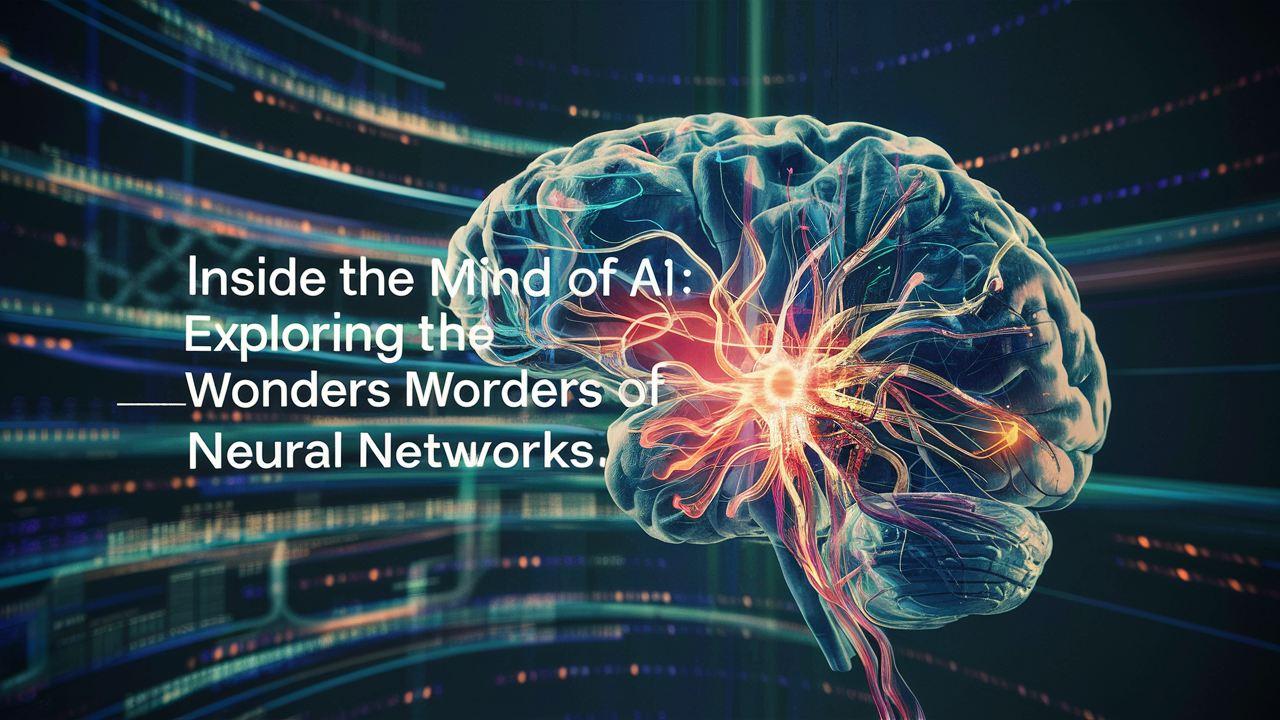Artificial Intelligence (AI) has revolutionized numerous aspects of our lives, and at the heart of this technological marvel lies the intricate workings of neural networks. These sophisticated systems have become indispensable tools in various domains, from healthcare to finance, driving innovation and transforming industries.
II. Understanding Neural Networks
A. What are Neural Networks?
Neural networks are a subset of AI that mimic the functioning of the human brain. They consist of interconnected nodes, or “neurons,” organized into layers. These networks are capable of learning and adapting through exposure to vast amounts of data.
B. How Neural Networks Work
Neural networks process information through a series of interconnected layers. Each layer performs specific computations on the input data and passes the results to the next layer. Through this iterative process, the network learns to recognize patterns and make predictions.
C. Types of Neural Networks
There are various types of neural networks tailored to different tasks, including feedforward, recurrent, and convolutional neural networks. Each type has its unique architecture and is suited to specific applications.

III. The Components of Neural Networks
A. Neurons
Neurons are the basic building blocks of neural networks. They receive input from other neurons, apply a transformation, and produce an output signal. These signals are then passed through the network for further processing.
B. Layers
Neural networks consist of multiple layers, including input, hidden, and output layers. Each layer performs a specific function, such as feature extraction or prediction, contributing to the overall output of the network.
C. Activation Functions
Activation functions introduce non-linearity into the network, allowing it to learn complex patterns and relationships in the data. Common activation functions include sigmoid, tanh, and ReLU (Rectified Linear Unit).
D. Weights and Biases
Weights and biases are parameters that determine the strength of connections between neurons. During training, the network adjusts these parameters to minimize the difference between its predictions and the actual output.
IV. Training Neural Networks
A. Data Collection and Preparation
Training a neural network requires large volumes of labeled data. This data is used to adjust the network’s parameters and improve its performance over time. Data preprocessing techniques such as normalization and feature scaling are often employed to enhance the training process.
B. Loss Function and Optimization
A loss function quantifies the difference between the predicted and actual outputs of the network. Optimization algorithms such as gradient descent are then used to minimize this loss by adjusting the network’s parameters iteratively.
C. Backpropagation
Backpropagation is a key algorithm used in training neural networks. It calculates the gradient of the loss function with respect to the network’s parameters and updates them accordingly, enabling the network to learn from its mistakes and improve its performance.

V. Applications of Neural Networks
A. Image Recognition
Neural networks have shown remarkable performance in image recognition tasks, surpassing human accuracy in some cases. They are used in applications such as object detection, facial recognition, and medical imaging.
B. Natural Language Processing
Natural language processing (NLP) tasks, such as sentiment analysis and machine translation, have greatly benefited from neural networks. These networks can understand and generate human-like text, enabling advancements in chatbots, language modeling, and more.
C. Autonomous Vehicles
Neural networks play a crucial role in the development of autonomous vehicles, enabling them to perceive their surroundings, make decisions, and navigate safely. They process data from sensors such as cameras, lidar, and radar to detect objects and predict their movements in real-time.
D. Healthcare
In healthcare, neural networks are used for various tasks, including disease diagnosis, drug discovery, and personalized treatment planning. They analyze medical images, genetic data, and patient records to assist clinicians in making informed decisions and improving patient outcomes.
VI. Ethical Considerations in AI
A. Bias in Data
Neural networks are susceptible to biases present in the data used for training, which can lead to unfair or discriminatory outcomes. Addressing bias requires careful consideration of dataset composition and algorithmic transparency to ensure equitable results.
B. Privacy Concerns
The widespread use of neural networks raises concerns about data privacy and security. As these systems become increasingly interconnected and reliant on personal information, safeguarding sensitive data against unauthorized access and misuse becomes paramount.
C. Job Displacement
The automation enabled by neural networks and AI technologies has led to concerns about job displacement and economic inequality. Addressing these challenges requires proactive measures, such as reskilling programs and policies that promote workforce inclusion and innovation.
VII. The Future of Neural Networks
A. Advancements in AI Research
Ongoing advancements in AI research are pushing the boundaries of what neural networks can achieve. Breakthroughs in areas such as reinforcement learning, unsupervised learning, and meta-learning hold promise for further enhancing the capabilities of these systems.
B. Potential Challenges
Despite their remarkable progress, neural networks still face challenges such as scalability, interpretability, and robustness. Overcoming these challenges will require interdisciplinary collaboration and continued investment in research and development.
C. Opportunities for Growth
The widespread adoption of neural networks presents vast opportunities for innovation and growth across industries. From personalized healthcare to autonomous transportation, these systems have the potential to revolutionize how we live, work, and interact with technology.
VIII. Conclusion
Neural networks are at the forefront of AI research and innovation, driving progress in various fields and reshaping the way we perceive and interact with technology. By understanding the intricacies of these powerful systems and addressing ethical considerations, we can harness their potential to create a brighter and more equitable future.
FAQs
- What is the significance of neural networks in AI? Neural networks form the backbone of AI systems, enabling them to learn from data and make intelligent decisions in complex tasks.
- How do neural networks learn? Neural networks learn by adjusting their parameters based on feedback from training data, a process known as backpropagation.
- What are some real-world applications of neural networks? Neural networks are used in a wide range of applications, including image recognition, natural language processing, autonomous vehicles, and healthcare.
- How do neural networks address ethical concerns such as bias and privacy? Ethical considerations in neural networks are addressed through careful data curation, algorithmic transparency, and privacy-preserving techniques.
- What does the future hold for neural networks? The future of neural networks is promising, with ongoing research focusing on advancements in AI capabilities, addressing challenges, and unlocking new opportunities for innovation.




